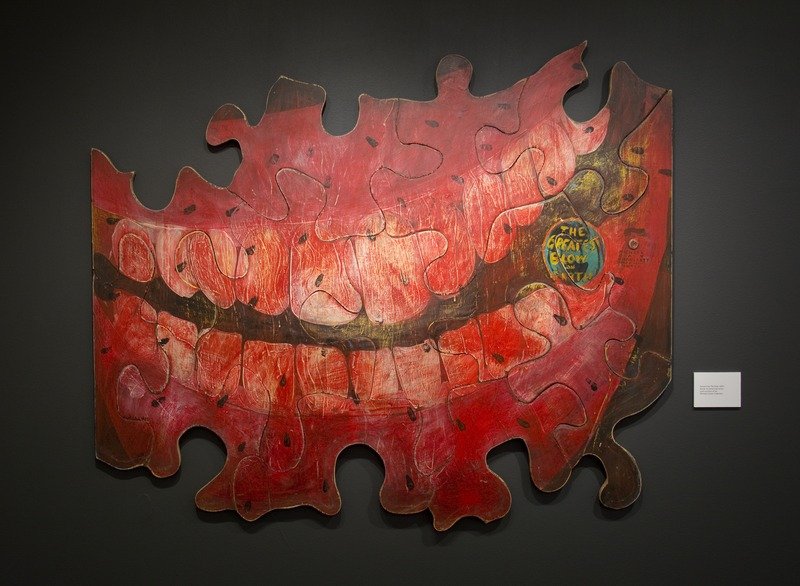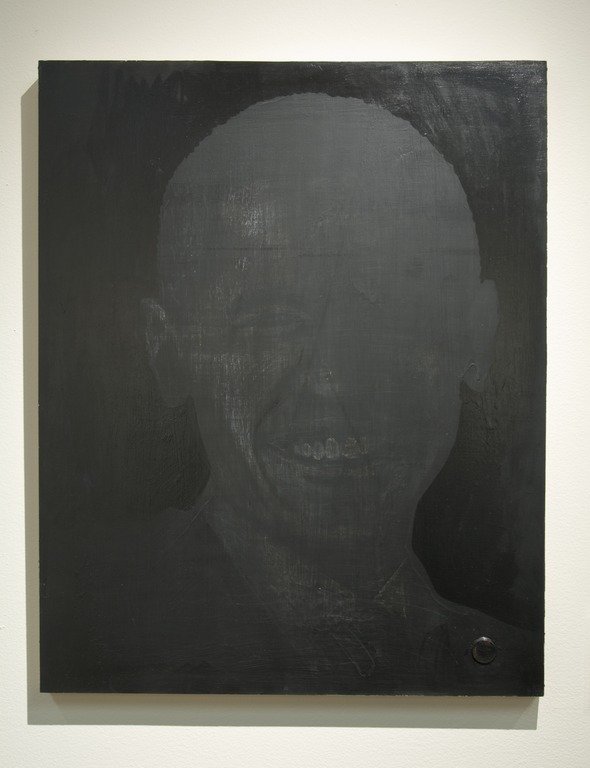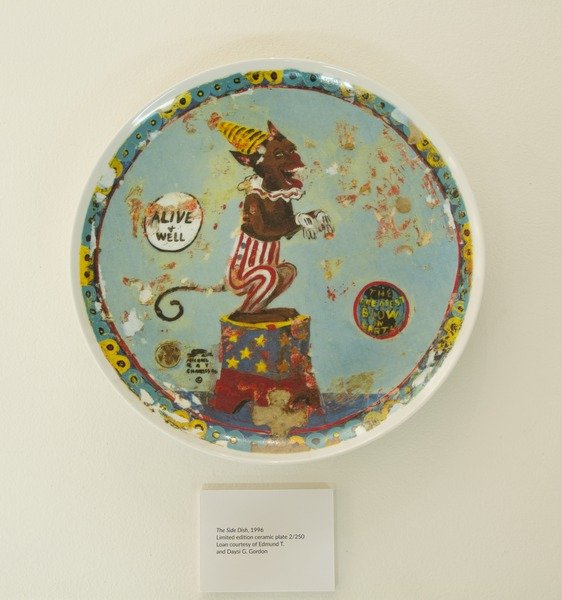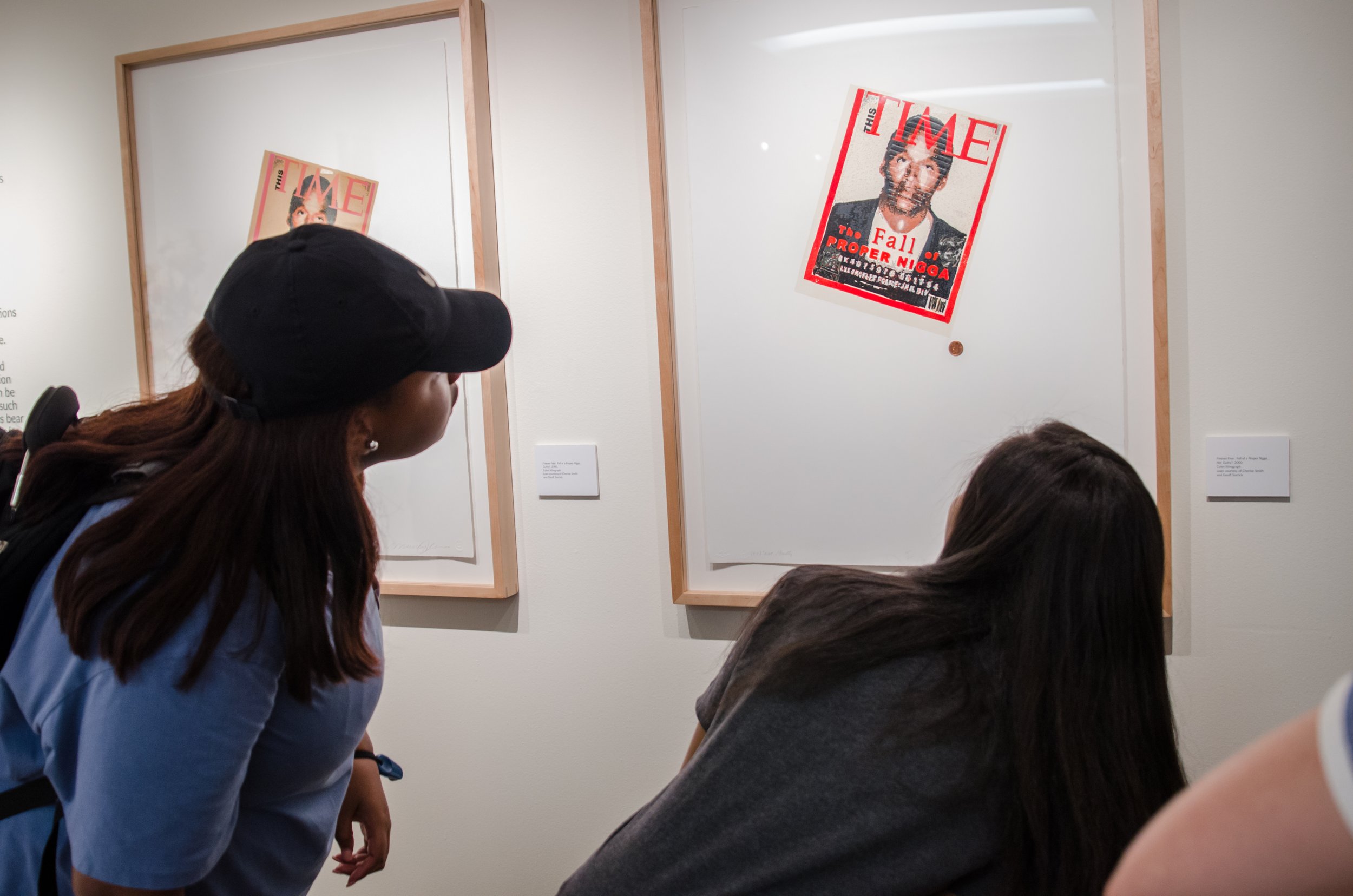FOCUS
MICHAEL RAY CHARLES
Curated by Dr. Cherise Smith
SEPTEMBER 19 - DECEMBER 22, 2017
ABOUT THE EXHIBITION
American artist Michael Ray Charles came to prominence in the mid-1990s, just a few years after joining the Art faculty here at The University of Texas at Austin (UT). In his art Charles deploys icons—ranging from watermelons and bananas to toothy grins and white-gloved hands—that have been attached to black people for more than a century. Indeed, he is known not just for his use of challenging images but also for engaging with the problematic narratives associated with them. Less documented, but evident here, is his interrogation of the sports-industrial complex and the complicated ways that African American men, in particular, interact with it. Some viewers might find Charles’s use of caricatures alienating, painful, and not entirely critical. Others may shake their heads at the biting humor and provocation evident in his work.
The range of objects exhibited here—including ink-on-paper sketches, acrylic-on-canvas paintings, and prints—demonstrates the diversity of Charles’s practice. While the artist is well known for his production in two dimensions, Ideas, Languages, Conversations (2015), the abstract sculpture hanging in the building’s atrium, and The Smile (2002) reveal his ability to work in three dimensions as well. Similarly, the painting Cream of the Crop (1992) and Ideas, Languages, Conversations show the artist’s willingness to depart from the figuration that dominates most of his oeuvre. The prints that make up the portfolio-in-progress uncover Charles’s artistic process, which necessarily includes thinking, designing, and experimenting until a successful end product is achieved. Regardless of medium, all of the works gathered here confront significant aspects of the country’s history.
The artworks in this exhibition are borrowed from local collections, demonstrating Charles’s long relationship with African and African Diaspora Studies at UT (AADS) as well as with the Austin area in general. He created many of the untitled sketches during meetings, including those of the Warfield Center executive committee, when Charles and other faculty members were engaged in designing AADS. The drawings reflect a loose style characteristic of active listening at the same time that they illustrate some of the icons that populate his work. Ted Gordon, Charles’s friend and colleague, saved the sketches from a likely fate of being buried in a circular file, thus documenting a common intellectual project as well as their friendship. Meanwhile Cream of the Crop testifies to the decades-long friendship between Charles and the collector Rudolph Green, as it was one of the first of many pieces by Charles that Green acquired. Focus: Michael Ray Charles celebrates the rich interpersonal and professional connections that have nurtured the artist’s critical and artistic practice.




